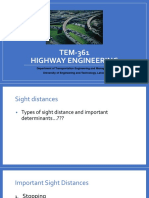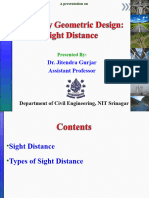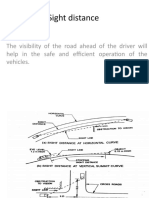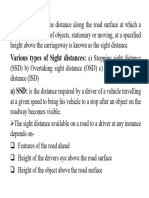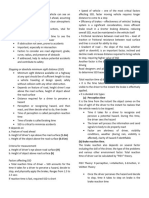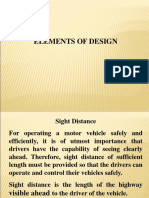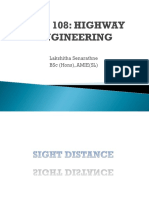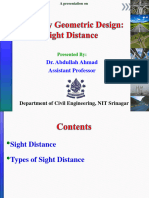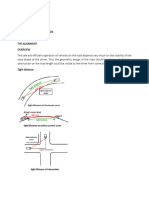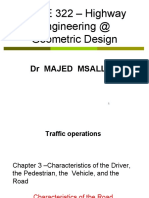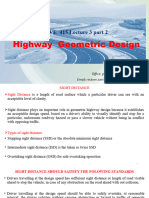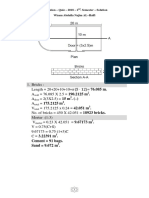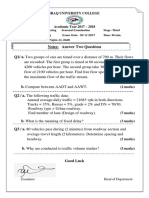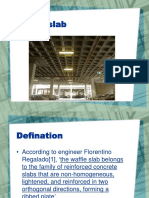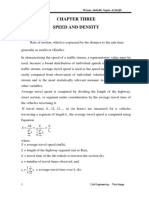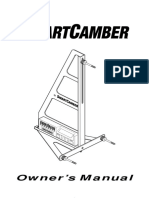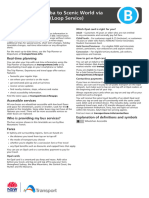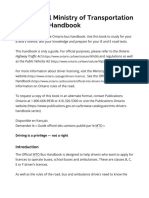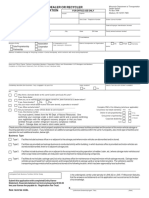0% found this document useful (0 votes)
88 views11 pagesChapter Six Sight Distance
Sight distance is the length of road visible to a driver. It depends on factors like reaction time, vehicle speed, brake efficiency, road friction, and gradient. There are three types of sight distance - stopping sight distance, which is the distance to stop before an obstruction; passing sight distance, which is the minimum distance to safely pass another vehicle; and intersection sight distance, which provides sufficient view to enter or cross an intersecting roadway. Sight distance must be considered in road design to ensure safe and efficient vehicle operation.
Uploaded by
محمد المهندسCopyright
© © All Rights Reserved
We take content rights seriously. If you suspect this is your content, claim it here.
Available Formats
Download as PDF, TXT or read online on Scribd
0% found this document useful (0 votes)
88 views11 pagesChapter Six Sight Distance
Sight distance is the length of road visible to a driver. It depends on factors like reaction time, vehicle speed, brake efficiency, road friction, and gradient. There are three types of sight distance - stopping sight distance, which is the distance to stop before an obstruction; passing sight distance, which is the minimum distance to safely pass another vehicle; and intersection sight distance, which provides sufficient view to enter or cross an intersecting roadway. Sight distance must be considered in road design to ensure safe and efficient vehicle operation.
Uploaded by
محمد المهندسCopyright
© © All Rights Reserved
We take content rights seriously. If you suspect this is your content, claim it here.
Available Formats
Download as PDF, TXT or read online on Scribd
/ 11


